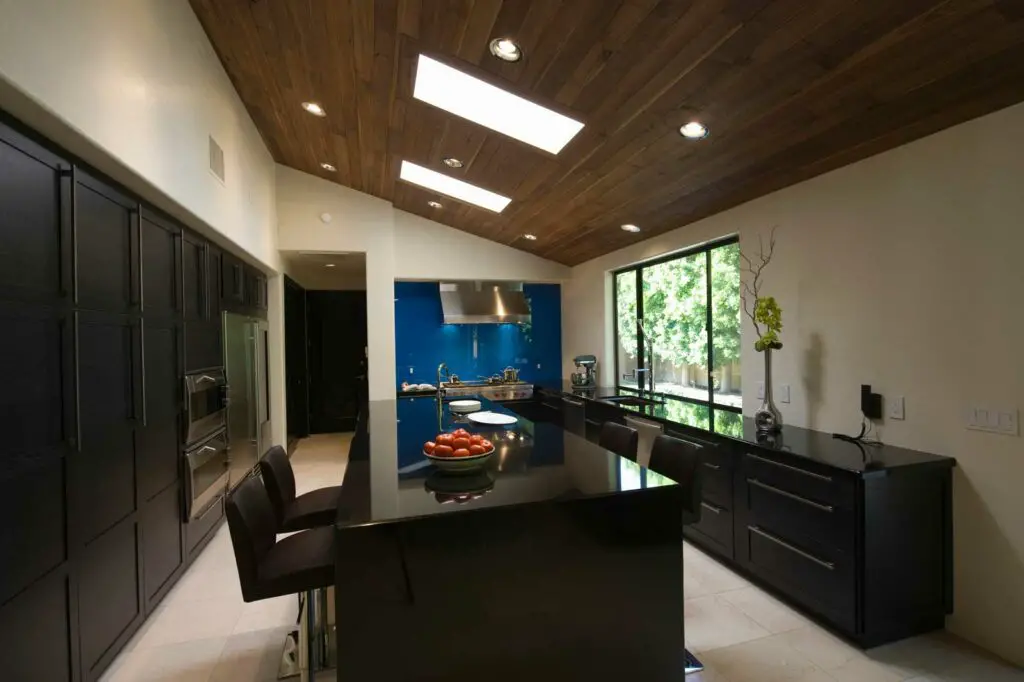If you’re here, you’ve probably been asking yourself, “Can you put recessed lighting in a sloped ceiling?”
The answer is a resounding yes, you can put recessed lighting in a sloped ceiling.
How do I know? Because that’s exactly what I did when we did our remodel of our home (several pics included below).
But like a DIY project of any size, there’s more to it than just a simple yes or no.
But what if you’re new to this? What kind of fixtures do you need? How do you even measure the slope? Hold that drill, we’ve got you covered.
Details like:
- How to install recessed lighting in a sloped ceiling?
- What are the specific considerations?
- Anything different I need to know about cathedral or other types of ceilings?
- What type of lights should you select?
- How can you design and arrange lights for optimal effect?
- Are there any alternatives to recessed lighting?
Each of these questions will be addressed – and more.
So, if you’re a homeowner looking to enhance your living space, or a DIY enthusiast ready to take on your next challenge, strap on your safety goggles. We’re about to shine a light on the topic like never before.
- Yes, you can install recessed lighting in a sloped ceiling, enhancing your room’s aesthetics and functionality.
- Installing recessed lighting in a sloped ceiling requires special considerations, like understanding the slope of your ceiling and using the right type of light fixtures.
- Proper installation involves key steps like locating the joist, cutting the access holes, and installing hanger bars.
- Selecting the right recessed lighting depends on factors such as size, power source, color temperature, and the intended purpose of the light.
- Designing and arranging the lights effectively can enhance the lighting in specific areas and create an overall pleasing aesthetic.
- Despite the advantages, recessed lighting can have certain drawbacks, like potential heat loss, cost, and complexity of installation.
- If recessed lighting doesn’t meet your needs, there are alternatives like pendant lighting or spotlights that can also work well for sloped ceilings.
Heads up! Before we get too far along here, if you want to connect with other homeowners, DIYers, and builders and get more great ideas for your home to make your space the best join my free private Facebook group, Remodel Reality here.
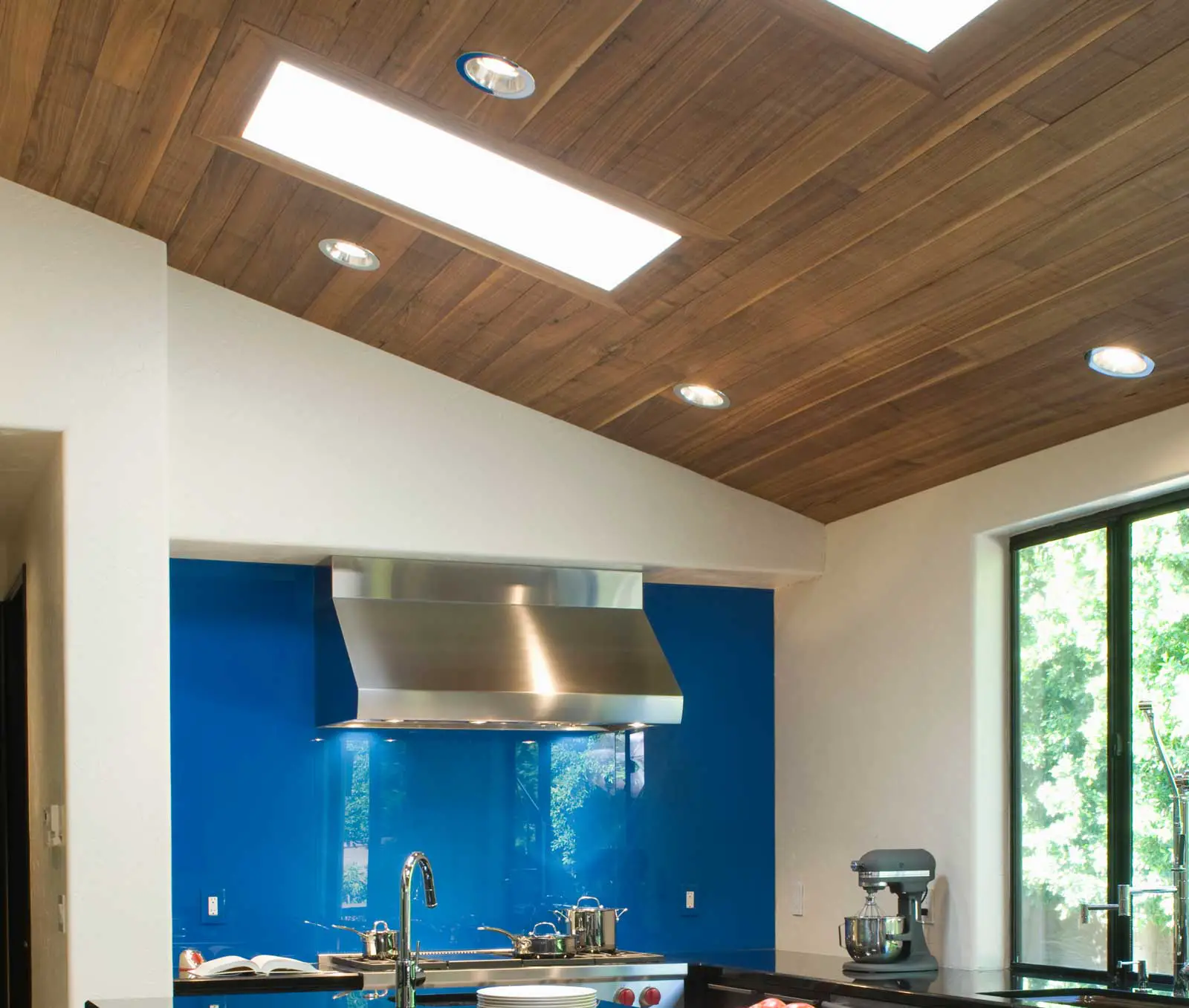
Illuminating Angles: The Art of Recessed Lighting in Sloped Ceilings
Ever looked up at a sloped ceiling and felt your brain tilt trying to figure out the best way to light it up? I’ve been there too. But don’t worry, this section is all about flipping that problem on its head.
The Enlightened Solution: Recessed Lighting for Sloped Ceilings
Yes, you can absolutely install recessed lighting in a sloped ceiling. Not only is it possible, it’s also an incredibly smart and stylish choice when it comes to lighting options for these unique spaces. You see, when regular fixtures just seem like they’re not designed for the angled world of sloped ceilings, that’s where recessed lighting steps in.
When we did our renovation on our home one of my goals was to get rid of as many incandescent light bulbs as possible to cut down on our power usage (not to mention the heat they generate and replace them all with LED lights.
One of the ways I did that was by installing recessed LED lights throughout our home. Just as a compass points you north, the right lighting can completely transform your space, turning a potential design headache into an eye-catching feature.
So why exactly is recessed lighting the perfect match for sloped ceilings? Well, it’s all about design and functionality. Recessed lights are made to sit flush with the ceiling, offering a sleek, modern look while casting a wide, effective pool of light.
The best part?
These lights can be tilted and directed towards specific areas, so every corner of your room gets the lighting it deserves.
The Bright Side of Recessed Lighting in Sloped Ceilings
When it comes to sloped ceilings, recessed lighting is like a superhero coming to the rescue. Conventional light fixtures can struggle to perform well on a slope, leading to uneven lighting or awkward shadows. But with recessed lights? It’s a whole different story. They sit comfortably within the slope, casting a consistent and bright light across your space.
And it’s not just about the light they cast, it’s also about the look. Recessed lights give your ceiling a clean, streamlined look, turning what could be a design challenge into a minimalist’s dream. Instead of drawing attention to the difficulty of lighting the space, they subtly blend into the ceiling, allowing the architectural beauty of the slope to take center stage.
If you’re dealing with a sloped ceiling, recessed lighting is more than just a good option, it’s a game-changer. Not only is it a practical and effective solution, but it also elevates the aesthetic of your space. So why not embrace the angle and light up your slope with style? After all, the right lighting can make all the difference.
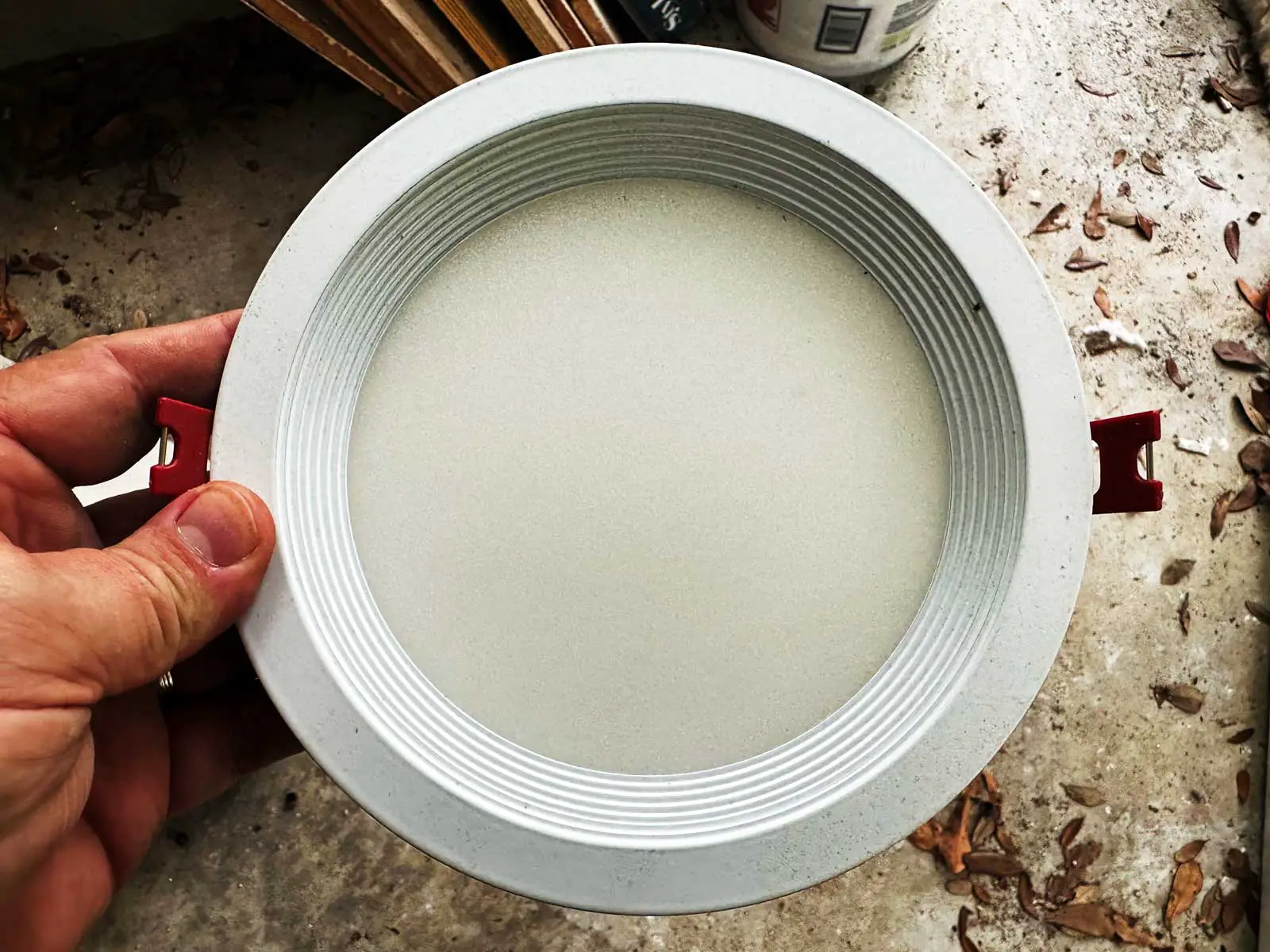
From Lofty Heights to Cozy Corners: Lighting Up Different Types of Ceilings
Ever wonder if the type of ceiling you have is more than just a design choice? Let’s talk through the peaks and valleys of different ceiling types and their unique lighting requirements.
The Sloped Ceiling: A High-Angle Challenge
With a sloped ceiling, you’re not just dealing with a design feature, you’re facing an uphill battle in the lighting department. These angled wonders can be tricky to light, but with the right approach, they can shine brighter than a polished diamond.
For these ceilings, you’ll need lights that blend with the angle without compromising on functionality. And as we learned earlier, recessed lighting hits the nail on the head. They can be tilted to direct the light where you need it most, turning a potential problem into a design advantage. In my experience, it’s like turning a mountain into a molehill…with style!
The Vaulted Ceiling: Reaching for the Sky
Next up, we have the vaulted ceiling, the skyscraper of the ceiling world. Vaulted ceilings are all about height and grandeur. They give a room a sense of spaciousness and luxury, but their height can make lighting them a bit like climbing Everest.
Pendant lights are a popular choice here, giving you the chance to make a style statement while providing effective lighting from their lofty perch.
And let’s not forget track lighting.
With the ability to adjust each individual light, track lighting is like having a team of rock climbers, each one illuminating a different part of your ceiling.
The Cathedral Ceiling: A Divine Intervention
Now, let’s step into the divine realm of cathedral ceilings. These are the creme de la creme of ceilings, combining the height of vaulted ceilings with the angles of a sloped ceiling. Lighting a cathedral ceiling is no small feat, but with a little divine inspiration, it can be heavenly.
Chandeliers are the go-to choice here, providing a central, dramatic light source that fills the space with a divine glow. But don’t forget about wall sconces. These little wonders can add accent lighting that highlights the unique architectural details of your cathedral ceiling.
The Flat and Tall Ceilings: The Straight Shooters
Lastly, we have the straight shooters of the ceiling world: flat and tall ceilings. While they may lack the drama of their sloped and vaulted counterparts, their straightforward design gives you a blank canvas when it comes to lighting.
For flat ceilings, you can’t go wrong with a good old-fashioned central light fixture. Want to go the extra mile? Consider layered lighting with a mix of ambient, task, and accent lighting.
Tall ceilings, on the other hand, need a bit more. Due to their height, they require lights that can throw their beams a long way. Pendant lights, chandeliers, and even track lighting can do the trick.
No matter what type of ceiling you’re dealing with, there’s a lighting solution out there that’s just right. Remember, it’s not just about illuminating your space, it’s about highlighting its unique features and personality. After all, ceilings are more than just a top cover, they’re a key part of your room’s character. So, light them up right!
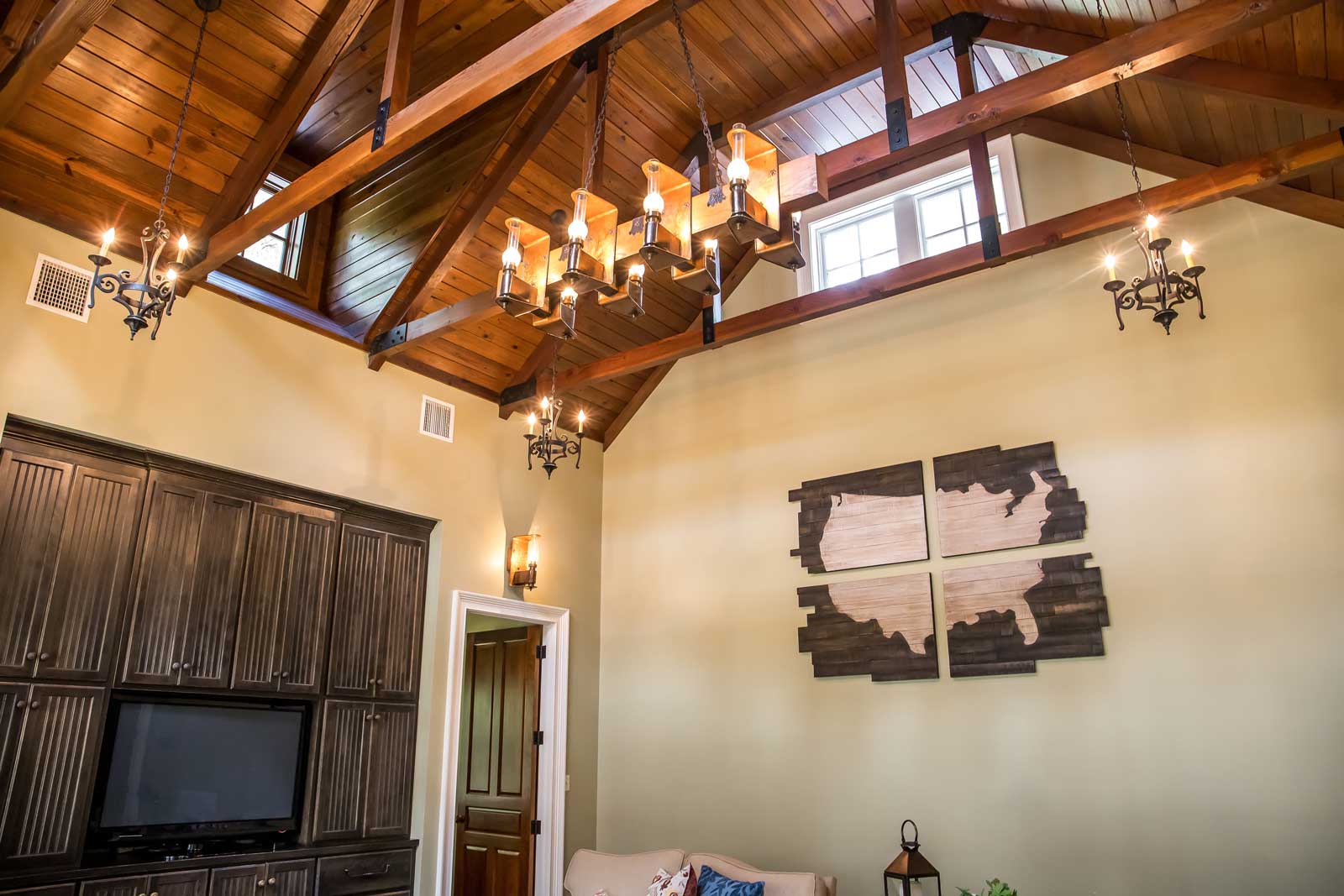
Is There Any Real Difference Between A Sloped Ceiling and a Vaulted Ceiling?
At this point I thought it would be good to take a moment to explain something that’s important regarding your ceilings.
There are differences between a sloped ceiling and a vaulted ceiling, and it mainly has to do with the structure and overall appearance of the ceilings.
A sloped ceiling, as the name implies, has a sloped or angled design. It’s typically found in upper floors where the roof has a pitch, like in attics or loft spaces. The slope might be on one side or both sides, depending on the roof design.
On the other hand, a vaulted ceiling is characterized by its height and arched design. This type of ceiling creates a sense of grandeur and spaciousness in a room. Vaulted ceilings are not necessarily sloped (although they can be), as there are many types of vaulted ceilings, including dome vaults, barrel vaults, and groin vaults, among others.
In terms of lighting, both types present unique challenges due to their structural differences. A sloped ceiling might require adjustable or angled lighting fixtures to provide effective illumination, while a vaulted ceiling, due to its height, might require lighting fixtures that can provide light from a higher position, like pendant lights or chandeliers.
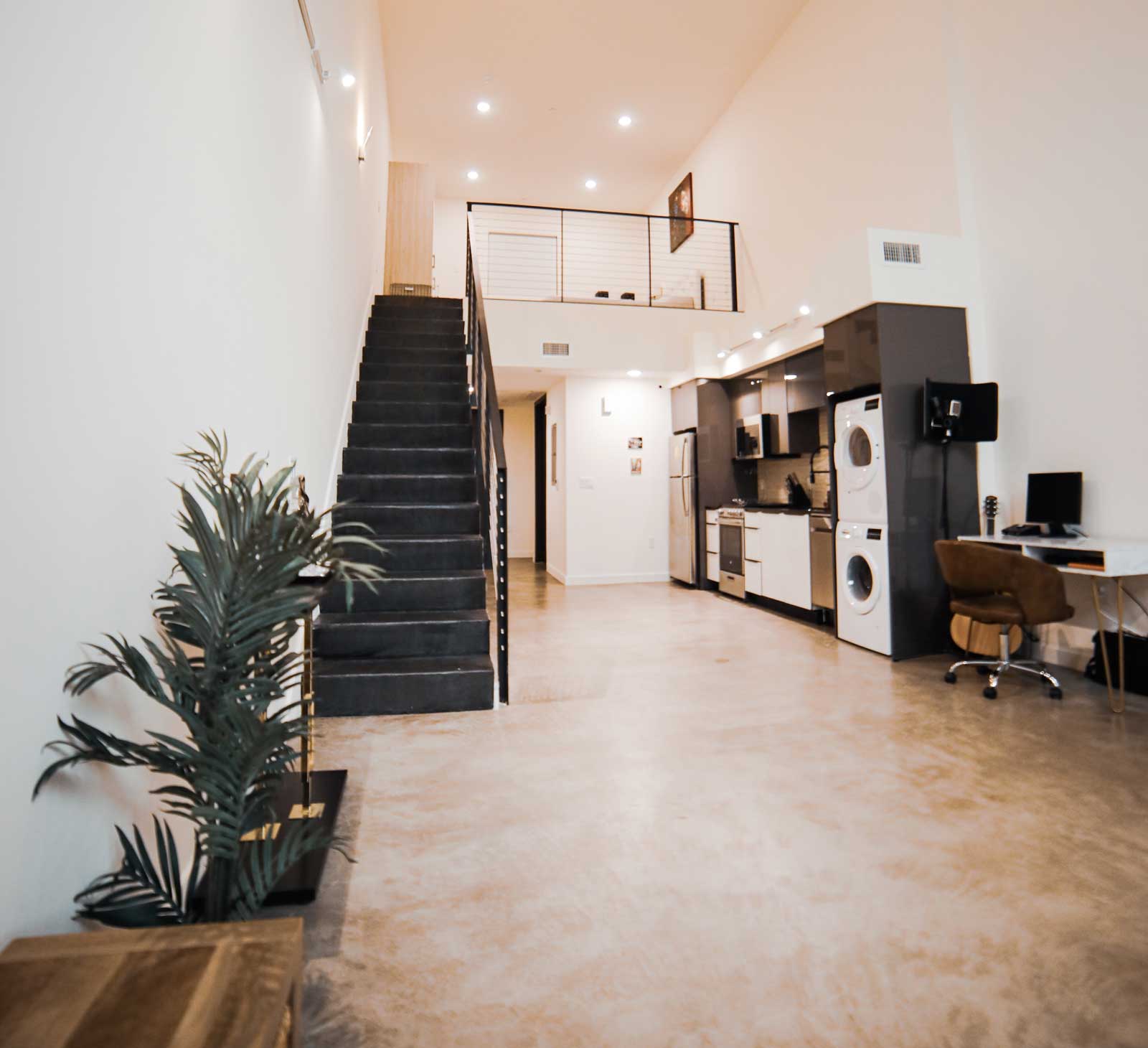
Demystifying Recessed Lighting for Sloped Ceilings
Ever walked into a room with sloped ceilings lit up with recessed lighting and thought, “Wow, this looks amazing!”? Then, as you gaze upward, you’re hit with a million questions. How do they install those lights? Are those regular fixtures or something special? Can I do this in my own home? You’re in luck! We’re about to dive into the world of recessed lighting, specifically for sloped ceilings, and I promise, it’s going to light up your world (pun intended, sorry, I couldn’t resist!).
Understanding the Basics
Recessed lighting for sloped ceilings is an architectural gem. It maintains the open, airy feel of a room with a vaulted ceiling while avoiding any interference with the architectural lines. Yes, the installation might seem like a puzzle at first, but with the right knowledge, it’s a challenge worth taking.
Adjustable LED Recessed Lights
Adjustable LED recessed lights (also known as Gimbal, Eyeball, or Directional lights) are the secret agents of recessed lighting. They have an axis that allows them to aim downward rather than following the ceiling pitch. This feature makes them ideal for sloped ceilings. And guess what? They come in several variations, each with a unique range of motion.
Angle-cut Fixtures
Next up, we have angle-cut fixtures, or as some might call them, Sloped Ceiling Recessed Lights. These fixtures are specifically designed for use with sloped ceilings. Their trim aperture is cut at an angle that coincides with the slope of the ceiling. This design ensures that the LED light bulb or lens points straight down towards the floor, rather than at an angle.
The Glare Factor
Now, let’s talk about glare. Have you ever sat in a room with a sloped ceiling and felt like the sun was shining directly in your eyes? That’s what happens when you use standard recessed lights on a vaulted ceiling. The light ends up being aimed at the same angle as the ceiling, causing unpleasant glare. But don’t worry, using adjustable or angle-cut fixtures significantly reduces this glare, focusing the light towards the floor and not your eyes.
However, there are some exceptions. In rooms with low-pitch ceilings or small rooms with tall sloped ceilings, standard lights could work just fine. This is because the lights end up well above your line of sight, reducing the impact of glare.
Size Matters
When it comes to choosing the size of your LED lights, there are a couple of approaches. You can go by the scale of the room, using large diameter lights (6-inch) for large rooms and small diameter lights (4-inch) for smaller rooms. Or, you can use small lights regardless of the room size, as they are less noticeable and blend better with the ceiling.
Planning Your Lighting Layout
Just like with flat ceilings, the lighting layout on a sloped ceiling should be evenly patterned to distribute light effectively. The room dimensions should guide you in calculating the number of lights needed, while the ceiling dimensions will help determine their placement. Remember, the length of the ceiling will be longer due to the slope, so plan accordingly.
Task Lighting and Accent Lighting
Task lighting (focused lighting for specific tasks) from tall, angled ceilings can be a challenge due to the ceiling height. Similarly, accent lighting (used to highlight certain areas or objects) from a sloped ceiling can be tricky if the subject is not directly below the lights.
Highlighting artwork hanging on the wall, for example, can be a bit of a challenge. Most recessed fixtures simply won’t have enough adjustment range to compensate for the pitch of the ceiling.
Navigating Installation Challenges
Remember when I said that installing recessed lights in a sloped ceiling might be a bit tricky? Well, let’s delve into why that is.
Firstly, vaulted ceilings are virtually always much taller than flat ceilings. This means you’ll need tall ladders or scaffolding to reach and perform the installation safely.
Next, many vaulted ceilings have the roof directly above the ceiling joists. This setup makes running new wiring to the lights a herculean task because you don’t have as much space between the interior ceiling and your roof as you would with a flat ceiling.
Access holes may need to be cut in the ceiling and wall to run the wiring between the lights and the wall switch. And did I mention that almost all ceilings have insulation directly above? This can make fishing new wiring even more difficult.
In some cases, sloped ceilings only have a few inches of depth between the ceiling and the roof. When this happens, the use of shallow recessed housings may be your only option.
And if you think that’s tough, try installing recessed lights in a ceiling finished with tongue and groove wood boards, like in the pics in this post. This setup is probably the most challenging because access holes cannot be easily made to run the needed wiring.
Choosing the Right Light Fixtures
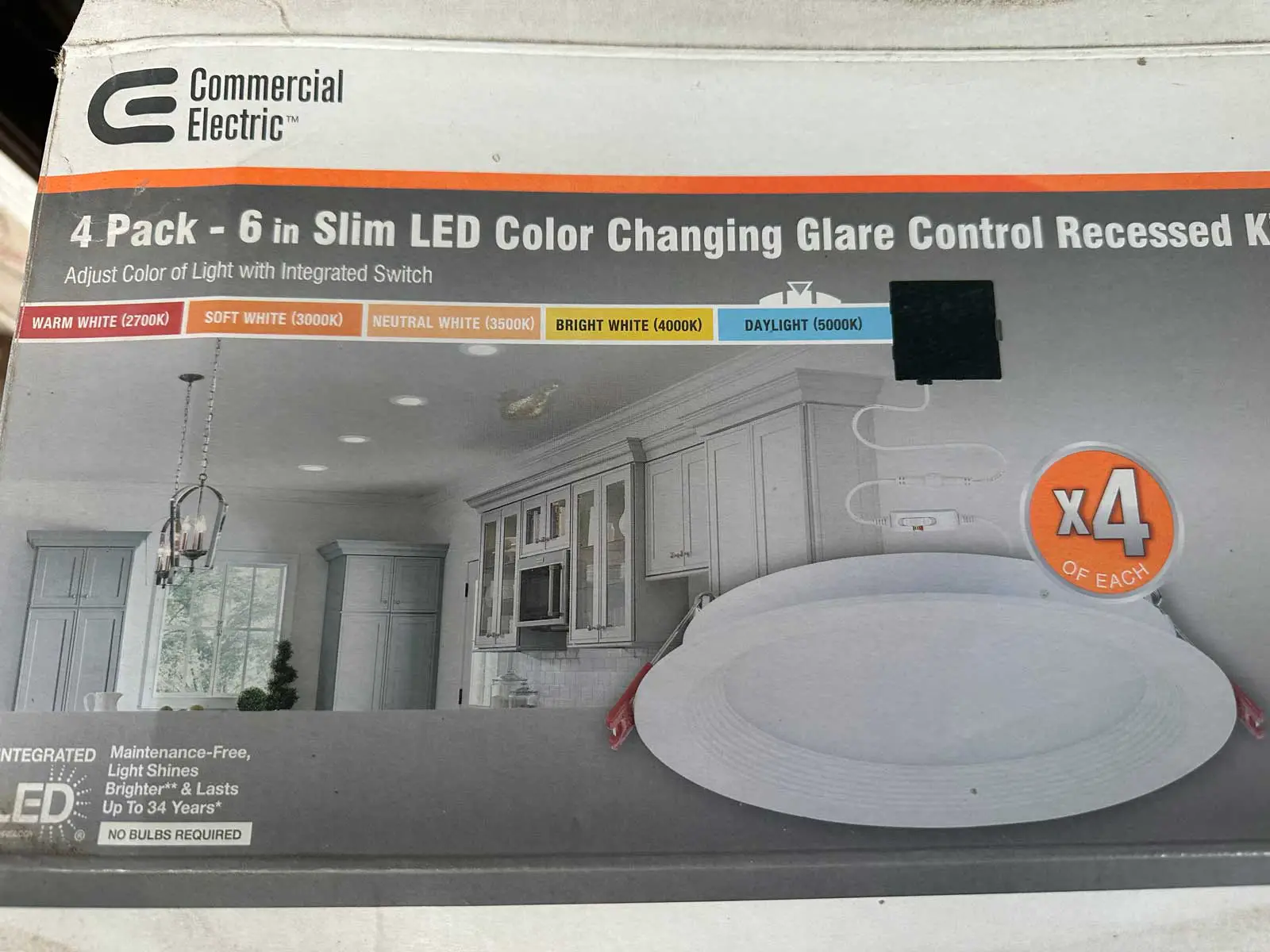
Choosing the right light fixtures is crucial. That pic above is the LED light I used throughout my whole house for our recessed lighting (Here they are on Amazon). As I mentioned earlier, it’s important to use recessed light fixtures that can be aimed down rather than towards the occupants of the room. The right fixtures can make a world of difference, eliminating discomfort and ensuring the benefits of overhead lighting are fully realized.
The LED downlights used in tall ceilings should have a minimum brightness of 600 lumens. Personally, I believe the higher the output, the better. You can always control the brightness using a dimmer switch (just make sure the light you buy is compatible with a dimmer switch because not all of them are), but having a strong light source is definitely a plus.
Maintenance Matters
Finally, let’s talk about maintenance. Replacing a recessed light in a tall ceiling can be difficult and sometimes requires special equipment. But here’s the good news: if you use high-quality LED recessed lights, they will typically last 20+ years before needing to be replaced. So, once they’re up there, you can enjoy your beautiful lighting for a long, long time.
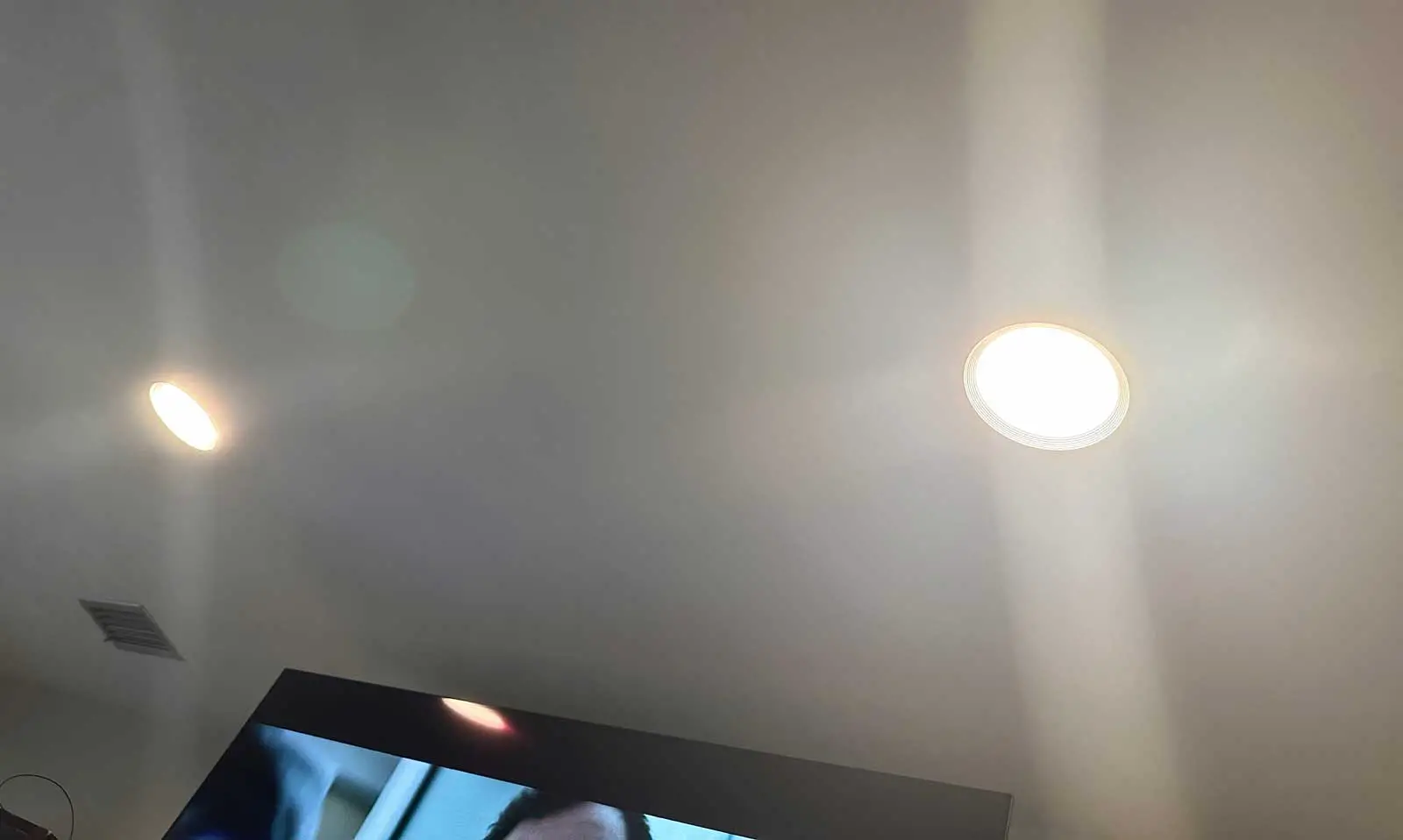
The Peaks and Pits of Recessed Lighting in Sloped Ceilings
| Pros | Cons |
|---|---|
| Maintains the open feeling of a room with a vaulted ceiling, doesn’t interfere with architectural lines. | Installation can be more difficult than in a flat ceiling due to the sloping nature of the ceiling. |
| Using adjustable LED recessed lights or angle-cut fixtures can help reduce glare significantly. | If you use standard (non-adjustable) recessed lights on a high slope ceiling, it can result in uncomfortable glare. |
| Recessed lights are less noticeable and blend better with the ceiling, especially when using smaller diameter lights. | Some sloped ceilings only have a few inches of depth between the ceiling and the roof, limiting the choice of fixtures to shallow recessed housings. |
| Lighting layout on a vaulted ceiling can be an even pattern to distribute the light effectively. | Task lighting is not ideal from tall ceilings, especially when they’re angled, due to the ceiling height. |
| Accent lighting is possible from a sloped ceiling if the subject is directly below. | Highlighting artwork hanging on the wall can be difficult, as most recessed fixtures will not have enough adjustment range to compensate for the pitch of the ceiling. |
| Recessed lighting can be easily connected to smart home devices, allowing control from a variety of devices including voice assistants, motion sensors, and smartphone apps. | Some sloped ceilings, especially those finished with tongue and groove wood boards, may not allow for access holes to run the wiring, making the installation more challenging. |
| High-quality LED recessed lights can last 20+ years before needing to be replaced, reducing the frequency of difficult replacements in tall ceilings. | Vaulted ceilings can be much taller than flat ceilings, requiring the use of tall ladders or scaffolding to safely reach and perform the installation, and replacements when needed. |
| The brightness of LED downlights can easily be controlled using a dimmer switch, allowing for adaptable light intensity. | Running new wiring to the lights can be very difficult if the roof is directly on top of the ceiling joists and there’s insulation directly above, possibly requiring access holes to be cut in the ceiling and wall. |
Lighting up Your World: The Advantages of Recessed Lighting
You walk into a room with a vaulted ceiling, and it’s like stepping into a cathedral. The height, the grandeur – it’s all breathtaking. But how do you light up this architectural marvel? The answer is simple: recessed lighting.
Recessed lighting is the ideal solution to provide lighting in rooms with sloped ceilings. It maintains the open feeling that a room with a vaulted ceiling has, and doesn’t interfere with the architectural lines (talk about a win-win situation!).
One of the biggest advantages of recessed lighting for sloped ceilings is the use of adjustable LED lights, also known as Gimbal, Eyeball, or Directional lights. These have an axis that allows them to be aimed downward rather than following the ceiling pitch, ensuring effective lighting without the risk of turning your living room into an unwanted interrogation room.
Another advantage is the use of angle-cut fixtures, specifically designed for use with sloped ceilings. The trim aperture is cut at an angle to coincide with the slope of the ceiling, while the LED light bulb or lens points straight down towards the floor below. This, my friend, is what we call hitting the bullseye!.
But wait, there’s more! The type of recessed lights you use can be determined by the scale of the room. Large diameter lights (6-inch) for large rooms, and small diameter lights (4-inch) for small rooms. But you can also opt to use small lights regardless of the size of the room because they are less noticeable and blend better with the ceiling (talk about being subtly stylish!).
The Cons: The Challenges of Lighting the High Heavens
Now, I don’t want to be a party pooper, but it’s only fair we also address the challenges that come with installing recessed lights in a sloped ceiling. As majestic as vaulted ceilings are, they can also be quite a handful (or should I say a ladder-full?).
Firstly, installing recessed lights in a vaulted ceiling can be considerably more difficult than in a flat ceiling. These ceilings can be much taller than flat ones, requiring the use of tall ladders or scaffolding to safely reach and perform the installation. Trust me, I’ve been there, and it’s not a walk in the park.
Another challenge is that many vaulted ceilings are constructed with the roof directly on top of the ceiling joists, making running new wiring to the lights very difficult. This might require cutting access holes in the ceiling and wall to run the wiring between the lights and the wall switch. And let’s not forget about the insulation directly above, which can make it difficult to fish new wiring.
Sometimes, you might only have a few inches of depth between the ceiling and the roof. In this case, shallow recessed housings, like the ones I used mentioned above, may be your only option. Remember, it’s not the size of the light in the fight, it’s the size of the fight in the light!.
And what if your sloped ceiling is finished with tongue and groove wood boards? This is probably the most challenging type of installation because access holes cannot be made to run the wiring. But, as they say, when the going gets tough, the tough get electricians who are very experienced installing recessed lighting in this type of ceiling.
Last but not least, replacing a recessed light in a tall ceiling can be difficult and sometimes requires special equipment such as tall ladders or scaffolding to safely reach. But there’s a silver lining to this cloud. If you use high-quality LED recessed lights, they will typically last 20+ years before needing to be replaced. So, once you’re up there, you can enjoy the view for a long time before you have to climb up again.
Curtain Call: The Final Thoughts
Lighting up a sloped ceiling with recessed lights can be a daunting task, but with the right knowledge, tools, and professionals, it’s certainly achievable. You just need to remember a few key things. Always use recessed light fixtures that can be aimed down rather than towards the occupants of the room to avoid uncomfortable glare.
The LED downlights used in tall ceilings should have a minimum brightness of 600 lumens. But don’t be shy about going higher – you can always control the brightness using a dimmer switch like we talked about before.
Lastly, consider how you want to control the lighting. With the emergence of smart home technology, you can now control your lighting using voice devices, remote controls, motion sensors, smartphone apps, timers, and even smart watches! Just remember to install a smart or connected dimmer that allows for such connectivity.
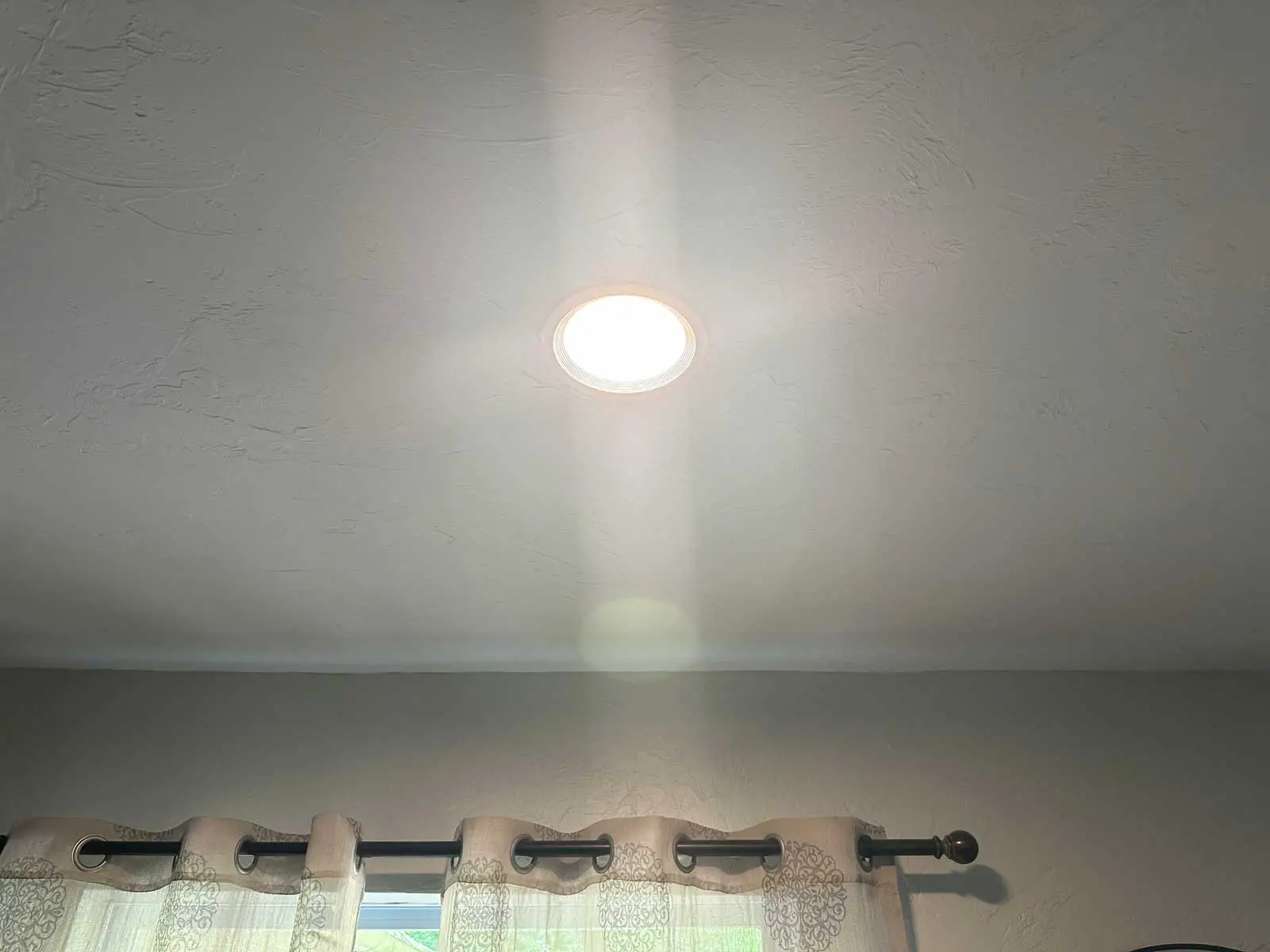
Shine Bright: Your Comprehensive Guide to Installing Recessed Lighting on a Sloped Ceiling
So, now that you’ve made the decision to install recessed lighting on that sloped ceiling of yours, you need to know how to do it, right? It’s really not too bad if you’re a little bit handy. Let’s dive right into the nuts and bolts of how to get it done.
1. Gather Your Tools: Preparation is Key
First things first, you’re going to need some tools for this task. This includes a drill, hole-cutting attachment (a hole saw or jab saw), wire strippers, a circuit tester, and of course, your recessed lighting fixtures designed specifically for sloped ceilings. Oh, and don’t forget the safety goggles and gloves. We want this to be a safe and easy installation, not an episode of DIY gone wrong!
2. Map Out Your Lights: Planning Makes Perfect
Alright, before you start drilling, it’s essential to map out your lighting plan. Trust me, “winging it” isn’t an option here. I obsessed over this part. Anything that looks asymmetrical is a huge eyesore and I can’t “unsee” it. Make sure to consider the placement of each light fixture in terms of general ambient lighting, task lighting, and accent lighting. The ultimate goal? Achieving a balanced, well-lit space that complements your room’s design.
3. Get Your Measurements Right: Precision is the Name of the Game
Measure twice, cut once, right? Well, that definitely applies here. The slope of your ceiling needs to be accurately measured to select the appropriate fixtures. Plus, you’ll need to determine the distance between the joist construction to install the hanger bars correctly. And remember, always check twice. We don’t want any wonky lights now, do we?
4. Drill Those Holes: Like a Hot Knife Through Butter
Once you’ve got your measurements, it’s time to cut the access holes for your recessed lights. You’ve got two main methods: using a template or cutting freehand with a drill and hole-cutting attachment. But here’s my pro tip: a hole saw attachment makes it super easy to cut clean, perfect circles every time. No Picasso skills required!
5. Run the Wiring: Follow the Yellow Brick Road
Now, you’re going to run the wiring from the power source to a switch box and then through the access holes in the ceiling. Remember, electricity isn’t something to mess around with. So, make sure the power is turned off before you start this step. A circuit tester can be your best friend here. In my experience, it’s a lifesaver (quite literally).
6. Install Your Fixtures: Time to Shine
Finally, it’s time to install your recessed lights. Mount the fixtures onto the ceiling using clips that clamp the housing of the fixture to the ceiling. After you’ve secured the housing, install the trim using either squeezable rod springs or coil springs. Then, step back and admire your handiwork!
7. Switch On: Let There Be Light
Okay, the moment of truth. Turn on the switch and let there be light! If everything has gone according to plan, your room should now be awash with a gentle, pleasing glow from your newly installed recessed lights.
The Bottom Line?
Installing recessed lighting on a sloped ceiling might sound like a Herculean task, but with the right tools, a bit of planning, and some elbow grease, it’s entirely doable. And the payoff? A dramatically improved aesthetic and a lighting solution that works with your sloped ceiling, not against it.
So, go ahead, roll up your sleeves, and get started on your lighting project. Just remember, when in doubt, don’t hesitate to consult a professional.
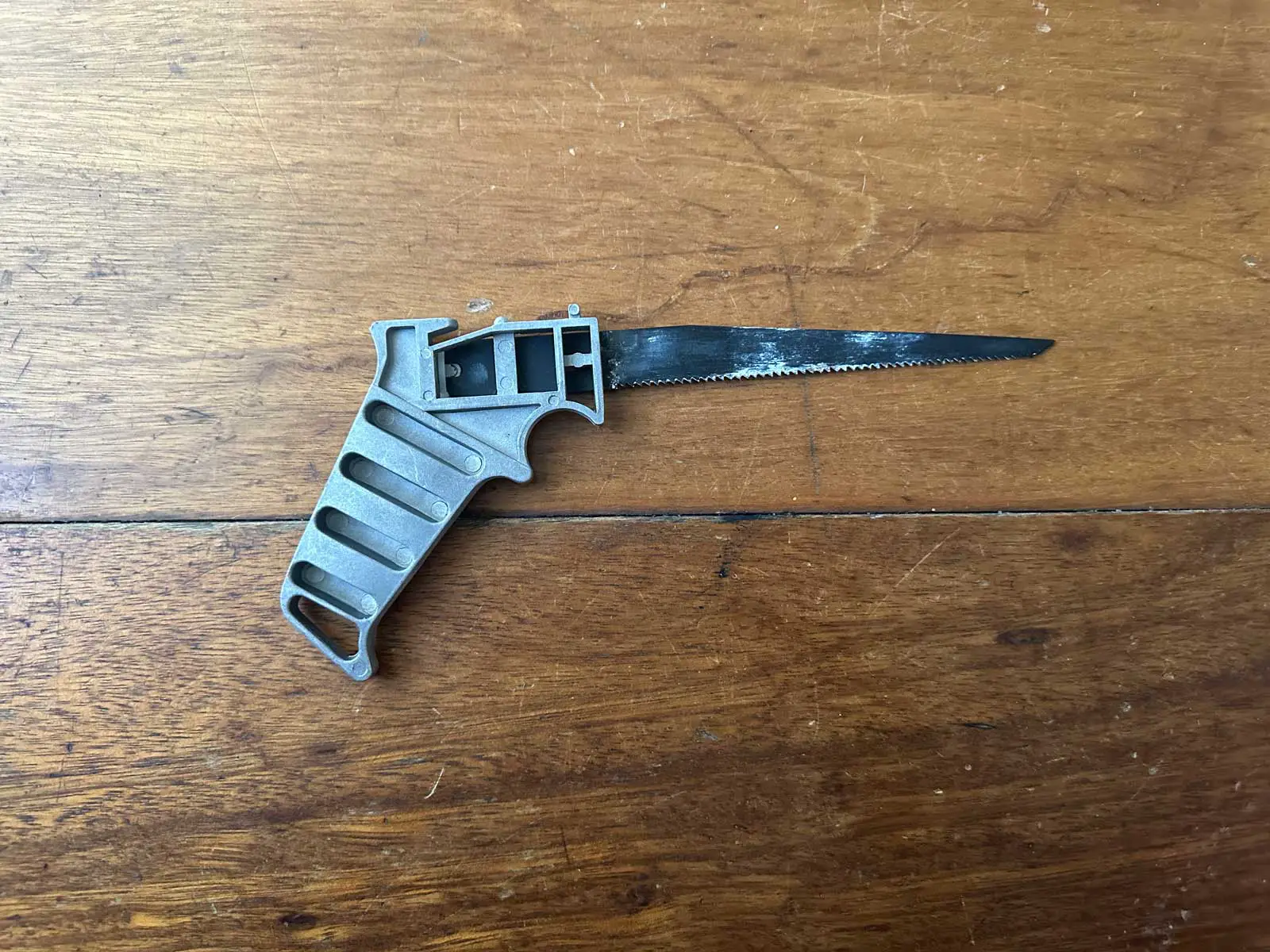
Choosing Your Lights: Selecting the Right Recessed Lighting for Your Sloped Ceiling
Thinking about installing recessed lighting on a sloped ceiling? You’ve just stepped into a world where angles, shadows, and the beam of light shines all play pivotal roles. Let’s take a stroll together through this wonderland of recessed lighting choices.
1. Size Matters: Getting the Scale Right
Here’s a question: what’s common between a well-tailored suit and the perfect recessed light? It’s all about the fit! The choice between 4-inch and 6-inch LED lights depends on the scale of the room or your personal preference for less noticeable lights. Think of it this way: large rooms demand larger fixtures, while small spaces work better with more petite lights.
2. The Power Struggle: Low Voltage vs. Line Voltage
Deciding between low voltage and line voltage recessed lights is a bit like choosing between Batman and Superman. Each has its strengths! Low voltage lights offer sharper light quality and better control of the beam of light shines. Line voltage lights, on the other hand, are less expensive and simpler to install. In my experience, the decision often comes down to the specifics of your project and budget.
3. The Color of Light: Decoding Color Temperature
Ever walked into a room and felt instantly cozy, or conversely, like you’d just entered a hospital? That’s the magic (or curse) of color temperature. For recessed lighting, you’ll want to consider the color temperature of the light bulbs. Warm colors can create a cozy, welcoming atmosphere, while cool colors might be better for task-oriented spaces.
4. Dealing with Dampness: Choosing the Right Fixtures
If you’re thinking about installing recessed lights in a bathroom or kitchen, you’re going to need fixtures rated for a damp location. Let’s face it, the last thing you want is your new lights fritzing out because of a little steam from your spaghetti pot!
5. Choosing the Best Type: Adjustable, Angle-Cut, or Standard Fixtures?
Remember, a sloped ceiling isn’t just any ceiling. As such, it demands more than just any recessed light. For sloped ceilings, adjustable recessed light fixtures and angle-cut recessed light fixtures are typically the way to go. But, if the pitch of the ceiling is low or if you’re dealing with a small room with tall sloped ceilings, standard recessed lights might just do the trick.
6. Don’t Ignore the Trim: It’s More Than Just Looks
The trim of your recessed lighting isn’t just for show. It also plays a role in how the light is dispersed. So, whether you’re selecting a trim aperture for your new 6-inch lights or smaller fixtures, keep in mind that the type of trim can affect the quality of light in the room.
7. Plan for Change: Easy Access to Light Housing
Finally, a word to the wise: choose fixtures that allow for easy access to the light housing. This will make your life a whole lot easier when it’s time to replace those light bulbs.
There’s a lot to consider when selecting the right recessed lights for a sloped ceiling, but don’t let that overwhelm you. Remember, it’s not about making the perfect choice; it’s about making the choice that’s perfect for you and your space.
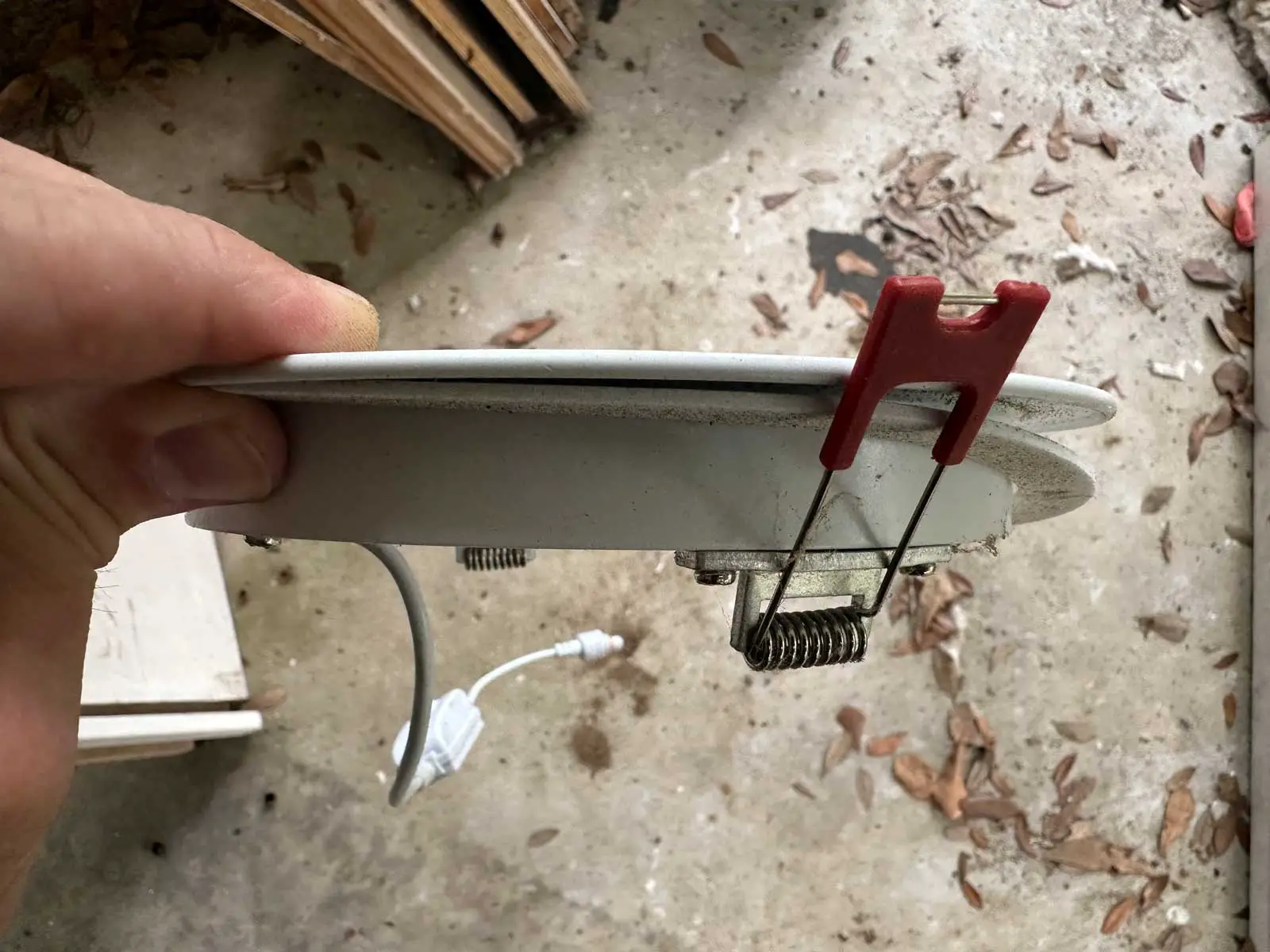
Lighting the Path: Design Tips for Recessed Lighting on Sloped Ceilings
Figuring out how to light the space was a bigger challenge than I imagined when I was working on our recessed lighting. What seemed intuitive and easy turned out to be a lot more difficult. It turned out great, I just wish I’d had tips like this when I did ours. Ready to illuminate your living space like never before?
1. Aim High: Lighting the Highest Points
If your ceiling’s slope is more dramatic than a plot twist in a thriller novel, you’ve got a unique opportunity on your hands. The highest point of your sloped ceiling can become a focal point. So why not spotlight it? Lighting the highest point of your ceiling can create a stunning visual effect. It’s like giving your ceiling a chance to say, “Hey, look at me!”
2. Stay Centered: Lighting the Middle of the Room
Keeping lights centered can create a harmonious balance in the room. This is an especially clever technique for sloped ceilings where the angle can make the space feel asymmetrical. Placing the light source in the middle of the room can counteract this effect, creating an optical illusion of balance and symmetry. And let’s be honest, who doesn’t crave a little balance in their life?
3. Spotlight on Specific Areas: Task and Accent Lighting
Ever try to chop onions under a dim light? Not fun, I assure you. In my experience, focusing on specific areas like kitchen countertops or reading nooks for task lighting can be a game-changer. Similarly, highlighting architectural features or artwork with accent lighting can turn your space into an art gallery overnight. It’s like giving each section of your room its very own moment of fame!
4. The More, the Brighter: Calculating the Number of Lights
“How many lights do I need?” This question haunts many homeowners like a tricky math problem. Here’s a simple rule of thumb: for recessed lighting, a common approach is to place each light approximately two feet away from the wall, and about two to three feet apart from each other. Of course, this isn’t a hard rule (we’re designing a room, not programming a robot). Feel free to adjust based on the specifics of your space and lighting needs.
5. Mixing it Up: Using Different Types of Lights
If you’ve ever admired a beautifully lit room, chances are, they didn’t use just one type of light. Mixing standard lights with recessed lighting can add depth and texture to your space. This approach allows you to create layers of light, transitioning smoothly from general to task to accent lighting. And if anyone asks, just tell them it’s your secret recipe for creating a well-lit room!
6. Staying Flexible: Using Adjustable Lights
Ever wish you could control where your light shines like a Jedi controlling their lightsaber? With adjustable lights, you can! For sloped ceilings, adjustable lights can be angled to focus on specific areas or to avoid unwanted shadows. With this flexibility, you can change the direction of the light anytime. So go on, channel your inner Jedi!
Designing with recessed lighting on a sloped ceiling is like putting together a puzzle: it might take some time, but the result can be a beautiful, well-lit space that you’re proud of. So, pick up that lightsaber (or, you know, recessed light), and may the force of great design be with you!
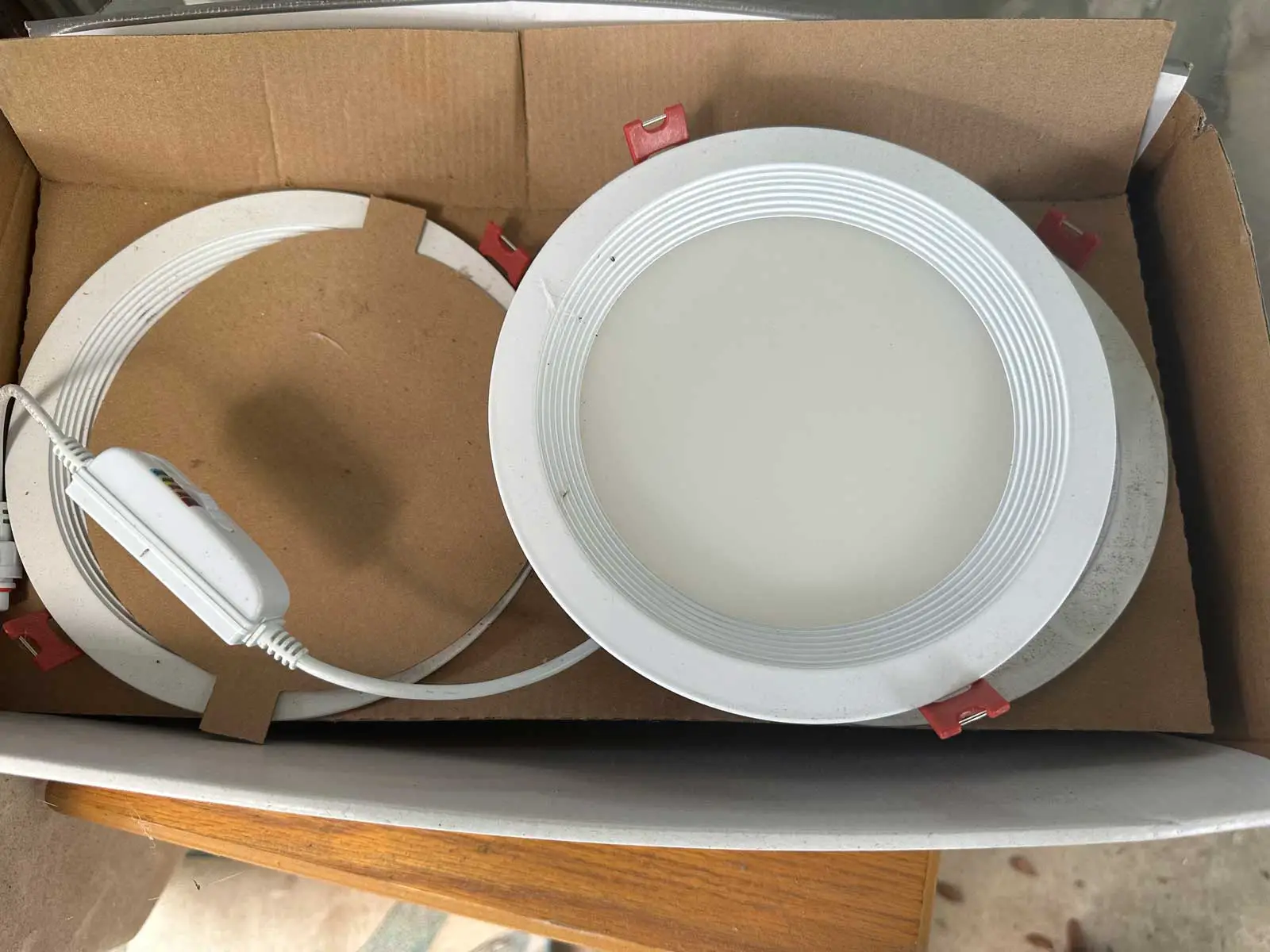
Beyond the Recess: Alternatives to Recessed Lighting for Sloped Ceilings
Think recessed lighting is your only option for a sloped ceiling? Think again. Sloped ceilings might be a bit unconventional, but that doesn’t mean your lighting options are limited to recessed fixtures. Ready to explore some fresh, exciting alternatives?
1. Hang in There: Pendant Lighting
Let’s start with a classic: pendant lighting. These hanging fixtures can add a touch of elegance and flair to any room. They’re just as easy to install and what we chose to use over the island in our kitchen. Sure, recessed lighting is great for that sleek, minimalist look. But if you’re after a statement piece that doubles as a light source, pendant lighting might be your perfect match. It’s like the chandelier’s younger, more hip sibling – and who doesn’t love a bit of family drama?
In my experience, pendant lights work exceptionally well over kitchen islands or dining tables. But here’s the thing, don’t let norms dictate your creativity. Want to hang a pendant light in the middle of your sloped ceiling living room? Go for it! It’s your house, after all.
2. On the Spot: Spot Lights
Do you enjoy the theatre? Fancy turning your living room into a stage, or maybe you just have a painting you want to showcase? Spotlights can do exactly that. These lights are all about directing focus, making them ideal for accent lighting. But wait, there’s more. With adjustable spotlights, you can shift the beam’s direction anytime you please. It’s like having a spotlight you can control, minus the stage fright!
3. Keep it Flexible: Track Lighting
Next up, we have track lighting. Now, if you’re looking for flexibility, track lighting has it in spades. You can position the lights anywhere along the track, and even adjust their direction. Plus, the tracks themselves can often be bent into different shapes. It’s like playing with a train set, only instead of trains, you’ve got lights. And instead of a locomotive chugging around, you’ve got a beautifully lit room. Not a bad trade-off, right?
4. Low and Glowing: Wall Sconces
Last but not least, let’s talk about wall sconces. These fixtures might sit lower than other lights, but they can pack quite the punch. Wall sconces are fantastic for adding a warm, inviting glow to your room. Plus, they’re perfect for spaces where overhead lighting may be too intense. Imagine them as the light equivalent of a comfy armchair: low, cozy, and just right.
Remember, lighting is one of the most crucial elements in defining the mood and functionality of a room. So, it’s worth spending some time exploring your options and finding what works best for you. With so many alternatives to recessed lighting, who knows? You might discover you like one of these options better than the recessed light fixtures you were thinking about.
Related & Frequently Asked Questions
If you’ve still got questions about recessed lighting after all this, don’t worry – I’ve got you covered. Here are some answers to the more frequently asked questions.
Q: What is a sloped ceiling adapter?
A: A sloped ceiling adapter is a device that allows you to install light fixtures, fans, or other items on a sloped or vaulted ceiling, ensuring they hang level instead of at an angle.
Q: What is the minimum ceiling height for recessed lighting?
A: There isn’t a minimum ceiling height for recessed lighting per se, but a good guideline is to install recessed lights about 6 to 8 feet apart for a well-lit room. Remember, though, this can vary based on the size of the light fixture and the room’s purpose.
Q: What is the difference between can lights and recessed lights?
A: There’s no difference between can lights and recessed lights. The two terms are used interchangeably to refer to lighting fixtures installed into a hollow opening in a ceiling.
Q: What is the max distance between recessed lights?
A: As a rule of thumb, recessed lights should be spaced at a distance that is approximately half the ceiling’s height. For instance, if your ceiling is 8 feet high, place your lights 4 feet apart.
Q: How high should recessed wall light be?
A: Recessed wall lights, often used as accent lighting, should typically be installed at a height of about 5-6 feet above the floor. However, this can vary based on the artwork or any features you’re looking to highlight.
Next Steps
Want to join others who are creating the most amazing home redesigns & renovations and get more tips, tricks and hacks on how to make your home the best it can be?
Join my brand new free private Facebook group, Remodel Reality to connect with other people like you to make your space the best!
